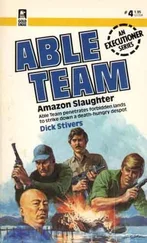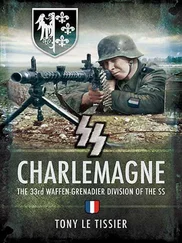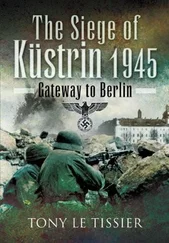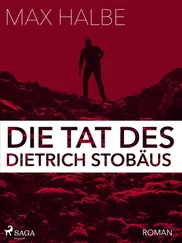As the gathering was quite large and Russian aircraft were crossing over us, bombs could be expected to fall at any moment. Without waiting for orders, I had my Tiger drive off, knowing the rest would follow.
The column moved off towards Kummersdorf. [19] A distinction has to be drawn between the village of Kummersdorf and the artillery proving ranges at Kummersdorf Gut with their own railway station six kilometres to the south. In all the soldiers’ accounts ‘Kummersdorf’ means the artillery ranges complex, not the village proper.
We were ashamed to see more civilians carrying weapons than soldiers. A large meadow-plain was enclosed by the edge of the woods opposite. Three Tigers and a few SPGs shot up some identified T-34s and anti-tank guns. Some soldiers and civilians charged across on a wide front, and the Russians fled. [20] Tieke, Das Ende zwischen Oder und Elbe , pp. 325–6.
SS-Lieutenant Bärmann resumed:
We passed the village of Horstwalde. After a broad meadow valley, the land began to rise. Suddenly everything stopped. Of all things, the leading Jagdpanzer had run out of fuel at a tree barrier. Then, in this situation, the cry went up: ‘Ivan is attacking!’ Meanwhile it had become dark, so who on earth could tell where and who Ivan was? Firing everywhere. We towed the Jagdpanzer back out of the barrier with our SPG and syphoned off the last drops of fuel before blowing it up. [21] Ibid ., p. 326.
Several wheeled vehicles had their fuel tanks emptied at Wunder before being destroyed, enabling the armoured vehicles to continue to lead the break-out. The march resumed through the woods in various-sized groups to Kummersdorf Gut, where the artillery ranges were reached during the night and the railway station, farm and military installations taken by storm. However, an advance by 71st Mechanized Brigade on Kummersdorf Gut with attacks on the flanks of the leading elements by the 50th and 54th Guards Rifle Divisions resulted in the formation of a third pocket near Klausdorf–Kummersdorf Gut–Horstwalde. This remained connected to the second pocket by a narrow corridor, but a certain number of soldiers became separated from the main party, were forced to the south, surrounded and taken prisoner. [22] Ibid ., pp. 325–6.
Willi Klär described events at Kummersdorf Gut:
On 26 and 27 April the Red Army deployed artillery pieces facing today’s demolition area from the forest warden’s lodge as far as the blown bridge where the road forks off to Fernneuendorf, as well as along the edge of the woods as far as Mönninghausen. Then, on the evening of Sunday, 29 April, Russian soldiers entered our homes and ordered the inhabitants to go to the cellar of the old folks’ home: the ‘Germanskis’ were coming.
The din started at about 2200 hours with bangs and flashes. There were screams and suddenly there were wounded German soldiers in the cellar. They belonged to General Busse’s 9th Army, which had been surrounded in the Spreewald, and were now trying to reach the west via Halbe, Zesch, Mückendorf, the forest warden’s lodge at Wunder and the Kummersdorf Ranges towards Trebbin. Those troops who survived the encirclement intact would join up with General Wenck’s 12th Army.
There were several wounded from explosive bullets among the civilian population, including a ten-year-old, Fritz Feldner, who received a splinter in his thigh that hit the artery. He died from loss of blood within a short time, as there were no doctors available. [23] Ortschronik von Kummersdorf Gut . [Rolf Kaim to author].
Erwin Bartmann, a sergeant from the SS Grenadier Regiment Falke , recounted his experiences on this day:
Once more we were without an officer and we set off again to the west. We then met a long column of soldiers and refugees trying to save their skins, and followed them. We came to the weapon-proving ranges at Kummersdorf, where we had to fight the Russians yet again. Beyond Kummersdorf, I and a few Waffen-SS comrades found ourselves in an unending column of soldiers of all arms of the Wehrmacht, generals and senior officers with their staffs. Again we came up against Seydlitz-Troops as we went through the woods. As was later discovered, the Seydlitz-Troops were under the command of Russian commissars. We were attacked in the woods by Russian infantry and Seydlitz-Troops . As we went along a firebreak they moved parallel to us and then attacked us from the flank. The Seydlitz-Troops wore German uniforms but were armed with Russian sub-machine guns. They kept on attacking us, mixing in with the column. When one appeared with an armband in his pocket with the words Komitee Freies Deutschland , one of the officers came up shouting: ‘Where are the SS? This man must be executed.’ I personally would have nothing to do with this big shot. We told them to do it themselves if they wanted someone killed. (I disliked these gentlemen of the senior staff intensely. At that time all they were doing was thinking of saving their own skins.) We moved from place to place, from south to north, and back to the south. The long procession of human beings went from one road junction to another, meeting up with other units. [24] Bartmann in the author’s Death Was Our Companion .
The Seydlitz-Troops were particularly active during this phase, as in this account by an unidentified soldier:
Near Sperenberg a second lieutenant suddenly appeared near me and wanted me to go and speak to his general. We were just about to make an attack, and some T-34s had been reported, when the second lieutenant said to me that we should stop the attack and fire three red flares. He had a flare pistol with him. The general was wearing camouflage uniform without badges of rank. When I went up to him and enquired his name and where he came from, he said that he was General Eckert and that he came from Führer Headquarters. I told him that we were continuing our attack and would fire no red signal rockets. He ordered the attack broken off, but then a Russian shell exploded nearby and he was killed. I checked him over: grey trousers, camouflage jacket, no medals or badges, no papers. I took the flare pistol from the second lieutenant and told him to bury his ‘general’. He was a Seydlitz man. [25] Wilke, Am Rande der Strassen , p. 86.
Despite the additional commitment by the Soviets of 71st Mechanized Brigade from the Wünsdorf area, 68th Independent Guards Tank Brigade from the Horstwalde area, and 117th Guards Rifle Division from Luckenwalde, the main German group was only checked briefly between Sperenberg and Kummersdorf Gut. By this time any formal command structure in the break-out groups had ceased to exist, but these desperate German troops maintained their successful efforts until nightfall that day, having overcome three Soviet cordons and covered about 25 kilometres, nearly half the way to Beelitz. [26] Lakowski/Stich, Der Kessel von Halbe 1945 , pp. 122–4.
Some, like Major Brand’s 21st Armoured Reconnaissance Battalion of 21st Panzer Division, were less fortunate, as he reported:
About 2,000 leaderless officers and soldiers had tagged on to the battalion, together with the same number of civilians of all ages and both sexes. Renewed break-out attempt early on 29 April. Success near Halbe at first, with the Russians withdrawing with heavy losses, but at the bridge where the road crosses the autobahn west of Halbe, the whole unit fell into a Russian trap. Hundreds of dead, semi-demented civilians, frightful state of affairs. Three fatal casualties in my own command vehicle. Control was lost. Women raped to death by Russians from a nearby camp lying in the woods and on the roads. [27] Brand in the author’s Death Was Our Companion .
Читать дальше












